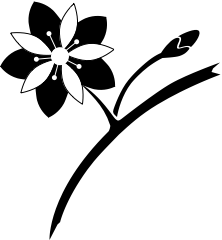BRHS is pleased to support the Bee Friendly Initiative
/Bee Friendly is a brand new initiative aimed at organisations around Wales. It is thought to be the first co-ordinated national scheme of its kind and has at its heart – making Wales a Pollinator- Friendly country. Although the scheme is called Bee Friendly, it is intended to help all pollinators, not just bees.
The Four Goals for Bee Friendly are:
- Food – providing pollinator-friendly food sources in your area.
- Five Star accommodation – providing places for insect pollinators to live.
- Freedom from pesticides and herbicides – committing to avoid chemicals that harm pollinators.
- Fun – involving all the community and telling people why you are helping pollinators.
As part of the quest to become a ‘Bee Friendly village’, Rossett Community Council is running a ‘Best Pollinator Garden’ competition. The main goal is to encourage people to plant pollinator friendly flowers in their own greenspaces to provide valuable nectar and pollen resources to native bees. Gardens will be judged in July when they are in full bloom and the winning garden will be announced at the BRHS Flower Show at the end of August.
If you would like to be involved, send your name, address, email and telephone number to clerk@rossettcommunitycouncil.cymru or send a message via the Facebook page. You will receive a reply confirming your entry to the competition and will be contacted in July to arrange for someone to visit your garden.
Here are helpful tips for growing pollinators:
The first is that ‘Pollinators’ come in all shapes and sizes; ranging from bees (honey bees, bumble bees, solitary bees), wasps and hoverflies to moths, butterflies etc. This is a diverse group with each one specialised in what they do and what flowers they visit! They are all after that sweet nectar and pollen!
The first rule of thumb is that single flowers are best (those doubles may look good to us, but all those petals makes it very difficult for pollinators to reach the nectar!). Native plants are another plus - pollinators have evolved with these, rather than the strange exotics.
It is also best to plant a succession of flowers across the year to supply a good supply of pollen and nectar. Like helicopters, hoverflies need landing pads: flowers with flatter blooms are easier to land on. Plants also produce more nectar in the sun- so choose sunny spots away from cold winds.
Weeds are also good! Goes against the grain - but weeds such as dandelion, daisy, creeping thistle and buttercup are especially sought after - however they also have better behaved family members that include chrysanthemums, sunflowers, globe thistles and clematis.
Also important, is to think about the pollinator’s life cycle - it’s all about diversity - build a pond or leave a water butt uncovered. Standing water is useful for the larvae of many species and for drinking. Bug hotels, holes, piles of twigs/old wood, compost etc. are especially sought after for winter refuge or during rain (handy if you need an excuse to be an untidy gardener!).
Pesticides and herbicides, of course, are bad and should be avoided or minimised. Don't spray aphids if there are hoverflies around: some lay eggs that hatch into aphid munchers.
Leave your lawn a little wilder. Hoverflies are partial to daisies. The rise in domestic lawn-care treatments that ‘feed and weed’ has depleted daisy numbers.
You can grow other plants as well as flowers - all fruits and some vegetables, like beans peas, tomatoes and courgettes need to be pollinated.
Pollinators love herbs as much as we do - anything from creeping thyme to large shrubs like lavender and rosemary will be magnets for a wealth of pollinators including foreign visitors like hummingbird hawkmoths and red admiral butterflies. Remember that caterpillars of lots of butterflies eat stinging nettles, so don’t think that the difficult untidy corner will lose you points!
A little attention will go a long way and you will soon reap the rewards in a diverse ecosystem.

